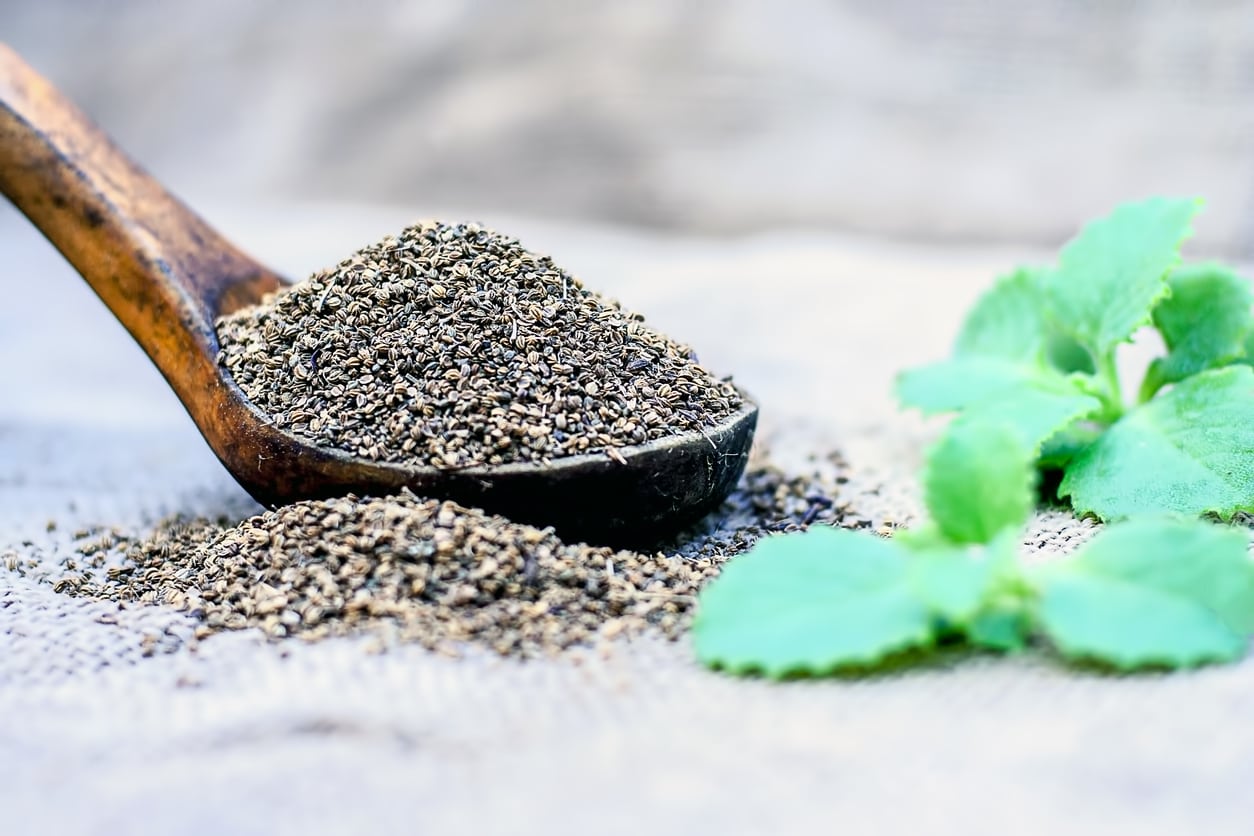Carom Plant Info: Learn About The Indian Herb Ajwain


If you’re looking to spice up your herb garden and go beyond the usual parsley, thyme, and mint, try ajwain, or carom, popular in Indian cooking. It’s an attractive and easy-to-grow herb for beds and indoor containers. You just need a little carom plant info to start enjoying this fragrant, tasty herb.
What is Ajwain?
The traditional Indian herb ajwain (Trachyspermum ammi), which is also called carom, ajowan, and bishop’s weed, is both a culinary and a medicinal plant. It grows quickly and readily, spreading and filling in spaces in beds. The leaves are attractive and ridged, so ajwain can be grown for use in the kitchen, but also for enjoying as a border or as clumps in ornamental beds. The leaves have a fresh herbal taste, reminiscent of thyme. You can also use the seeds in cooking, which resemble cumin seeds and have hints of thyme, anise, and oregano. The leaves are best used fresh in vegetable and yogurt dishes, while the seeds can be ground or used whole in curries, sauces, chutneys, and lentils. Some of the traditional medicinal uses for carom herb plants include a variety of digestive issues: upset stomach, gas, diarrhea, and abdominal pain. It has also been used to treat bacterial and fungal infections, for asthma and other respiratory conditions, to reduce coughing, and as a diuretic.
How to Grow Carom in the Garden or Indoors
If you live somewhere tropical, you can grow carom outdoors as a perennial. In more temperate climates, it can be an annual outdoors or you can grow it indoors in containers. This is an easy plant to grow, but it may be difficult to find. If you can find fresh ajwain in an Indian specialty grocery, you can grow a plant from the cuttings. Carom will grow in nearly any soil type but prefers more alkaline soil. It does not need a lot of organic material, and once in the ground, will only need regular watering and sunlight. Make sure the soil drains well and that you don’t overwater it, and your carom plants should start growing and spreading. Avoid planting somewhere where you do not want it to fill in spaces. It tends to take over, much like mint does.
Sign up for the Gardening Know How newsletter today and receive a free copy of our e-book "How to Grow Delicious Tomatoes".

Mary Ellen Ellis has been gardening for over 20 years. With degrees in Chemistry and Biology, Mary Ellen's specialties are flowers, native plants, and herbs.